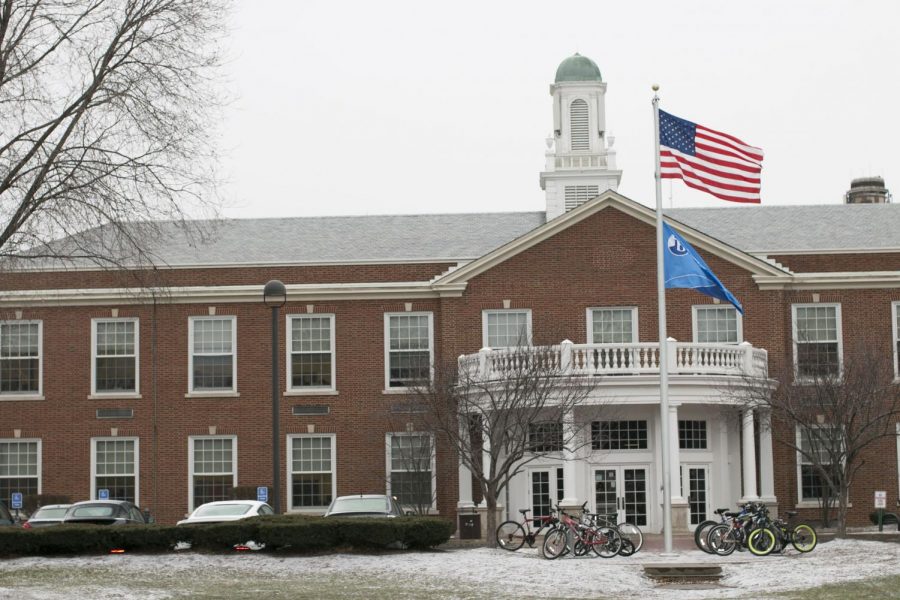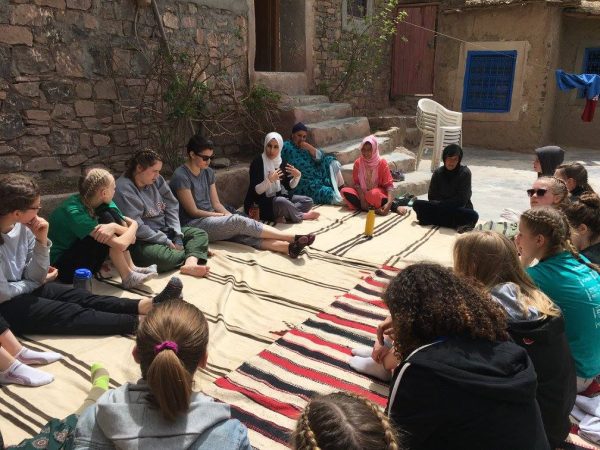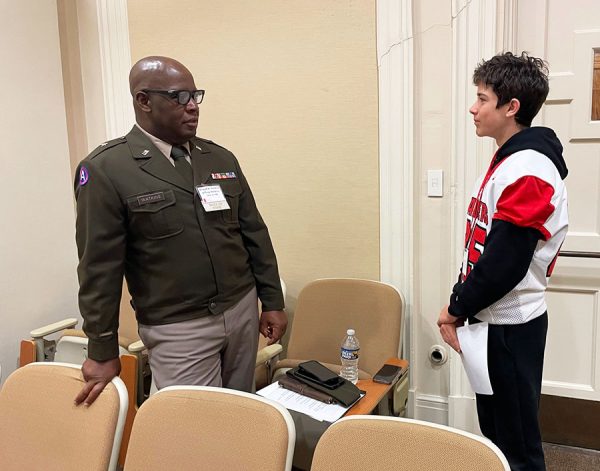A Pledge to What?
Exploring the message intended and received in the middle school’s daily Pledge of Allegiance
The American flag waves in front of the high school. “While the pledge does include the phrase ‘one nation under God,’ it does not specifically support or advocate for any specific religion,” David Glasner, middle school principal, said.
I pledge allegiance to the flag of the United States of America, and to the republic for which it stands, one nation under God, indivisible, with liberty and justice for all.
What do these words mean to you? Do they make you feel national pride or patriotism? Do they evoke a sense of community? Or do you find them meaningless?
No matter how they feel about it, students at the middle school have recited the Pledge of Allegiance during daily announcements since the employment of Principal David Glasner in 2014.
“In today’s divisive social and political climate, it is important to regularly remind ourselves that we are all part of the same community and that our goal as a community is to promote equality and justice for all,” Glasner wrote in an email. “This is why we include the Pledge of Allegiance in our daily announcements.”
As professional athletes join former NFL quarterback Colin Kaepernick’s protest by kneeling during the national anthem, controversy has arisen over public displays of patriotism. As the Take a Knee movement reaches public school students, questions about whether students should be compelled to participate in nationalistic speech in public schools have arisen as well.
In addition to the pledge’s patriotic statement, it also invokes God. “While the pledge does include the phrase ‘one nation under God,’ it does not specifically support or advocate for any specific religion,” Glasner wrote.
The Pledge of Allegiance did not mention God until 1954, when President Dwight Eisenhower pushed to include the clause as an anti-communist message, according to The New York Times. It was first published in 1892 as a non-specific pledge; mention of the United States flag was not added until 1923. According to a 1943 U. S. Supreme Court ruling, “the Free Speech clause of the First Amendment prohibits public schools from forcing students to salute the American flag and say the Pledge of Allegiance.”
However, Glasner wrote, students are not required to stand or recite if they do not feel comfortable doing so.
Michael Sears, a history teacher at the middle school, agreed that students should not be forced to participate. “Students should be encouraged to stand, but they should not be punished if they choose to sit quietly during the pledge,” Sears wrote.
Sears also acknowledged concern about the inclusion of God in the pledge. “While I personally would be in favor of removing any mention of God from government documents, I don’t think it will ever happen,” Sears wrote. “Our legal system comes from moral codes of conduct that were passed down through the generations and are largely rooted in a Judeo-Christian tradition from the time of the Roman Empire.
“I think even non-religious Americans don’t mind the idea that there is some higher power guiding our country.”
Freshman Maggie Carter, who attended the middle school, recalls an incident in which a substitute teacher sent her classmate to ATS, the alternative to suspension program, for refusing to stand during the pledge. Two other students confirmed this account.
“[The substitute] told him that he needed to stand for the Pledge of Allegiance because it was disrespectful not to. He refused and then [the substitute] said that he was going to have ATS if he didn’t stand. He still refused and then he got sent to ATS,” Carter said.
Carter believes that it was wrong for her classmate to be punished for exercising First Amendment rights. “In no way should a student have to say it or stand,” said Carter. “It’s their right to be sitting during the Pledge of Allegiance.”
In a different instance, a middle school teacher asked students to get out of their seats during the pledge to show respect. The teacher said standing and kneeling were acceptable forms of participation. This teacher did not respond to requests for comment.
Senior Ben Wilson does not believe the Pledge of Allegiance should be recited in schools. “I think kids should figure out how they feel on their own instead of institutions, like the school they go to, telling them how they should feel.”
Wilson had first-hand experience with young students and the pledge through the Student Group on Race Relations. “When you’re standing there, watching the kids, it’s like so many other things they do at school — it doesn’t mean anything to them. They’re just going through the motions,” he said.
Wilson said, “It’s almost like brainwashing.”






